Planning a fence and installation project? This guide is here to help you choose the best materials and make installation easy. We’ll cover everything from picking the perfect wood, vinyl, metal, or PVC fence to managing costs and preparing your yard. Get ready for a smooth installation process.
Key Takeaways
-
Choosing the right fence material is essential; options include wood, vinyl, metal, and PVC, each with unique advantages and maintenance needs.
-
Understanding installation costs involves considering material, labor, and additional features, so get multiple quotes to find the best value.
-
Proper yard preparation and clear communication with neighbors can lead to a smoother installation process and help avoid disputes.
Choosing the Right Fence Material
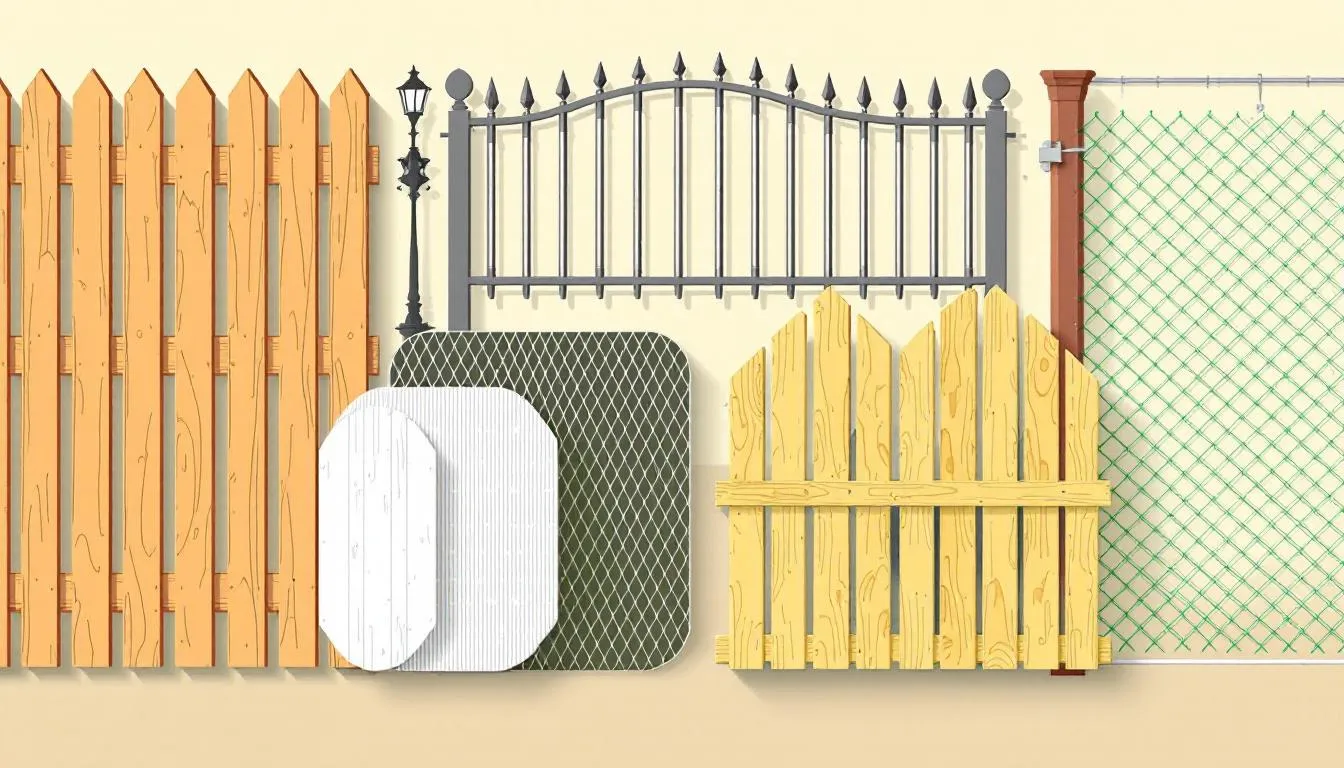
Selecting the right fence material is crucial as it impacts the fence’s appearance, durability, and cost. Factors such as your budget, desired aesthetic, and functional needs play a significant role in this decision.
Examining the pros and cons of different materials can help determine an informed choice.
Wood Fences: Classic Appeal with Considerations
Wood fences offer a timeless, natural look that can complement various home styles, from rustic to elegant. Cedar, redwood, and pine are popular choices, with cedar being particularly favored for its natural beauty and resistance to decay.
While wood fences are typically more affordable initially, they require regular maintenance, such as staining or sealing, to prevent rot and weather damage. Over time, these maintenance costs can add up, making wood a potentially more expensive option in the long run.
Despite these considerations, wood fences remain a popular choice for their versatility and ability to add significant curb appeal to your property. Whether you’re looking for a charming picket fence or a robust privacy fence, wood can provide a solution that meets your needs while enhancing the aesthetic of your home.
Vinyl Fences: Low Maintenance and Durable
Vinyl fences are prized for their durability and low maintenance requirements. Unlike wood, they don’t need painting or staining and are resistant to pests and rot. This makes vinyl fences a cost-effective option in the long run, as they incur fewer maintenance costs compared to wood.
In addition to their practical benefits, vinyl fences come in a wide range of colors and styles, allowing you to choose an option that complements your property’s aesthetic perfectly. Whether you’re looking for a privacy fence or a decorative boundary, vinyl can provide a stylish and lasting solution.
With their combination of durability, low maintenance, and aesthetic flexibility, vinyl fences are an excellent choice for homeowners seeking a long-term investment in their property’s fencing.
Metal Fences: Security and Strength
Metal fences are synonymous with security and durability, making them an ideal choice for homeowners looking to protect their property. Common types include:
-
Chain-link: often used for their practicality and affordability
-
Wrought iron: provides a high level of security and aesthetic appeal
-
Aluminum: offers unique benefits
Each type offers unique benefits.
However, metal fences can be more expensive than other materials, particularly if you opt for wrought iron. Aluminum, on the other hand, is lighter and easier to install, offering a good balance between security and ease of installation.
If security is a primary concern, metal fences are hard to beat. Their strength and durability provide peace of mind, knowing your property is well-protected, even if you are afraid of potential threats. A secure property is essential in today’s world.
PVC Fences: Modern and Affordable
PVC fencing is gaining popularity due to its durability, affordability, and wide range of styles and colors. These fences are resistant to weather elements, which means they maintain their appearance without the need for extensive upkeep.
One of the key advantages of PVC fences is their affordability, making them an attractive option for homeowners on a budget. Additionally, PVC can mimic the appearance of wood or vinyl while being significantly lighter and easier to handle.
If you’re looking for a modern, cost-effective fencing solution that requires minimal maintenance, PVC fences are an excellent choice. They offer a balance of aesthetics and practicality that can enhance any property.
Understanding Fence Installation Costs
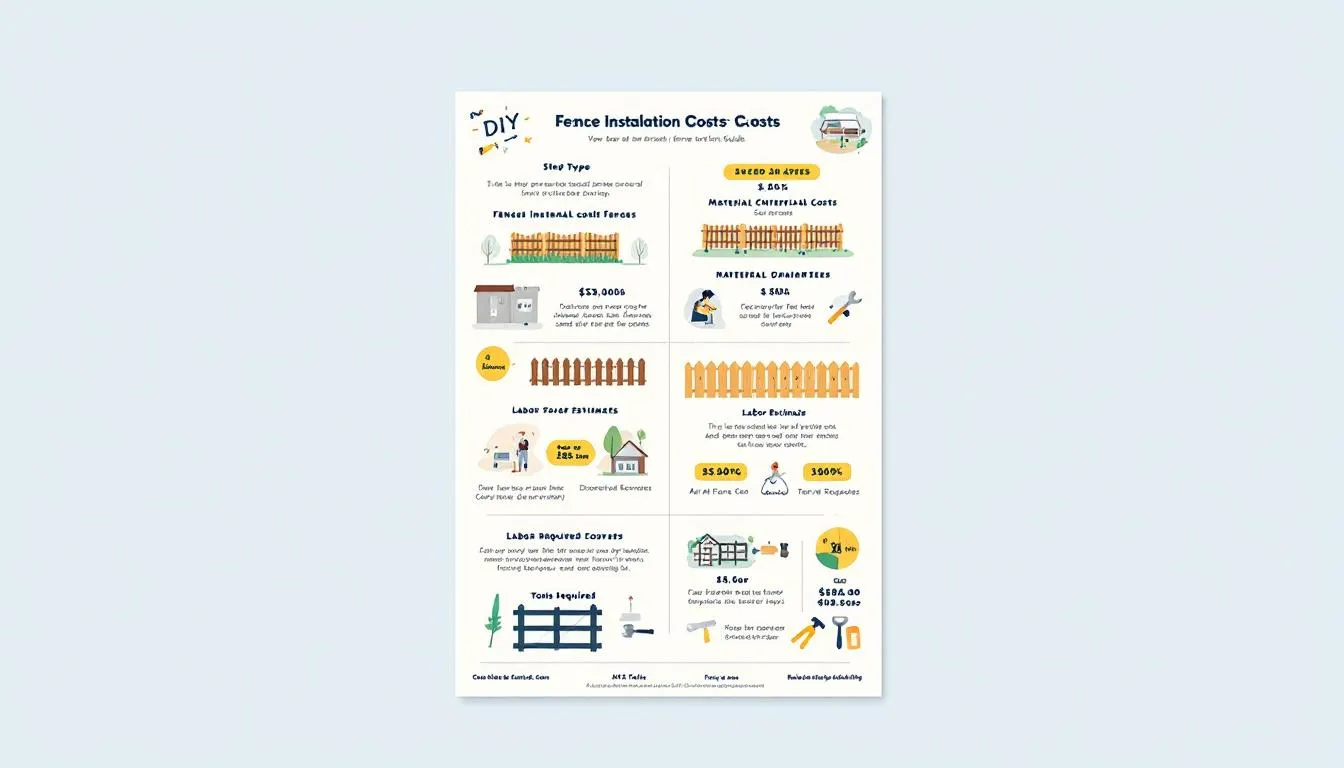
The total cost of fence installation is influenced by several factors, including fence installation cost, the materials used, fence height, size of the area to be fenced, and labor costs.
Understanding these factors can help you budget effectively and avoid unexpected expenses.
Material Costs
Different materials come with varying costs and benefits. For instance, wood, vinyl, metal, and PVC each have unique advantages and drawbacks. Vinyl fences, for example, are resistant to fading and don’t require painting or staining, making them cost-effective over time.
Requesting detailed quotes that outline all costs, including materials, labor, and timelines, helps avoid unexpected expenses. This allows you to compare prices effectively and choose the best estimate for your budget.
Labor Costs
Labor costs significantly impact the total cost of fence installation. It’s crucial to obtain multiple quotes from various contractors to ensure you’re getting competitive pricing. Labor costs typically depend on factors such as the complexity of the installation and local labor rates.
Comparing prices and evaluating different contractors helps manage your budget effectively and ensures you get the best value for your project.
Additional Features and Their Costs
Adding elaborate designs or additional features like gates can significantly increase the cost of your fence installation. These features not only add to the material and labor costs but also require more intricate installation processes.
When planning your fence, consider which features are essential and which are optional. This can help you manage costs while still achieving the desired functionality and aesthetics.
Preparing Your Yard for Fence Installation
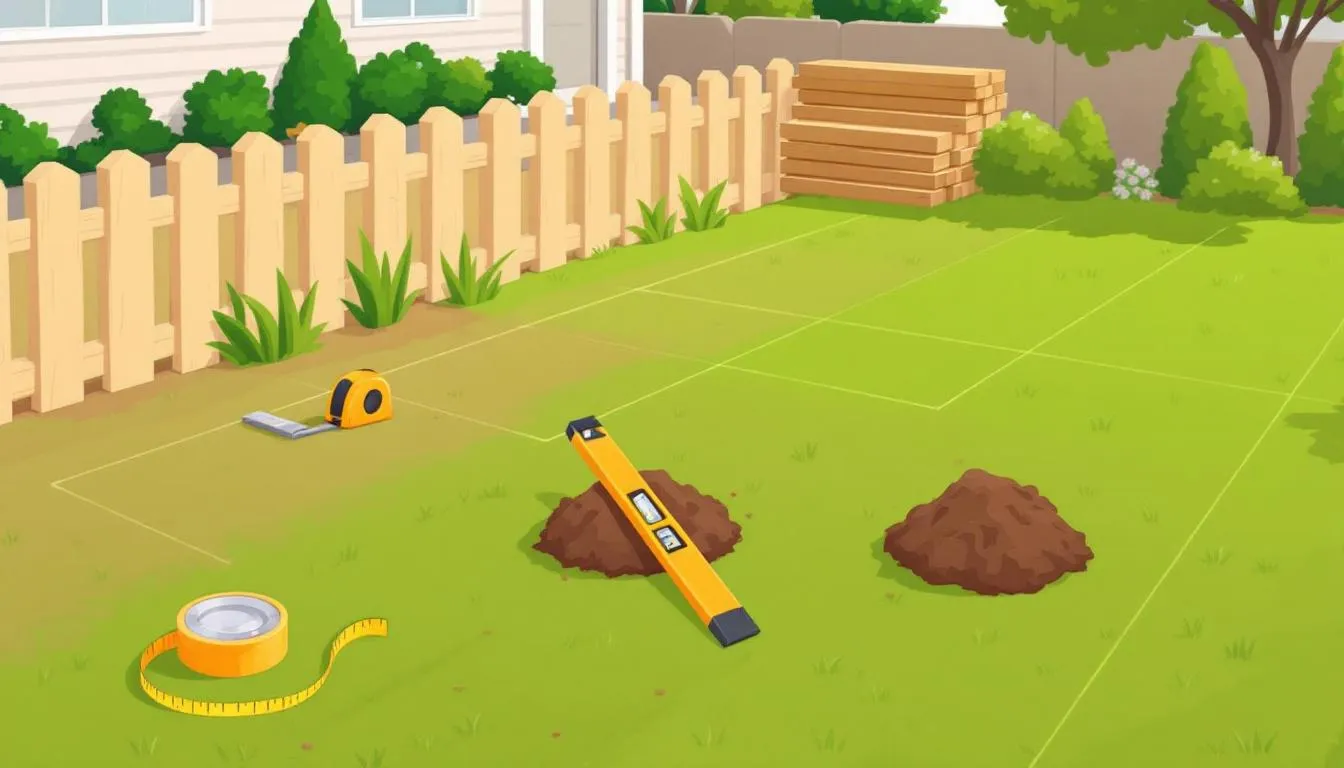
Proper preparation of your yard is crucial for a smooth fence installation process. This involves:
-
Planning the design
-
Clearing the fence line
-
Marking property lines
-
Managing underground utilities.
Clearing the Fence Line
Clearing the fence line is an essential step to ensure a smooth installation process. This involves removing any overgrowth, debris, and obstacles that might impede the installation.
If you have plants or shrubs near the fence line, make sure to tie them back. Additionally, inform the installers to prevent any interference during the installation process. A clear fence line not only facilitates a more efficient installation but also reduces the risk of delays or complications.
Marking Property Lines
Accurate marking of your property lines is crucial to avoid disputes with neighbors regarding fence placement. Ensuring the fence is correctly positioned within your property boundaries can prevent future conflicts and legal issues.
Managing Underground Lines
Before digging post holes, it’s essential to be aware of any underground utilities to avoid damaging them during the installation process. Contacting utility companies to confirm the locations of underground lines can prevent costly repairs and safety hazards.
Navigating Local Regulations and Permits
Understanding and complying with local regulations is crucial to avoid legal issues and ensure your fence installation meets all requirements. Most fence installations require a permit, which involves submitting detailed site plans and boundary surveys to local zoning authorities.
Researching Local Laws
Before starting your fence installation, it’s vital to research local laws and regulations. This can help avoid issues with neighbors and ensure compliance during installation. Municipal websites often provide valuable information regarding local building codes and zoning laws related to fence installation.
Understanding these regulations carefully ahead can prevent potential headaches later. Be sure to check local laws.
Acquiring Necessary Permits
Obtaining a permit for new fence installations often requires submitting a detailed site plan and boundary survey to local zoning authorities. Start early and contact the building and zoning department to understand specific requirements for your area.
The office staff can assist with any questions you may have about the permit process, ensuring you have all the necessary documentation in place before beginning your project.
Collaborating with Your Neighbors
Good communication with your neighbors can make the fence installation process smoother and more enjoyable. Informing them about your plans and addressing any concerns can prevent potential conflicts and foster a cooperative atmosphere.
Informing Neighbors About Your Plans
It’s advisable to notify your neighbors well in advance before starting any fence installation. This gives them the opportunity to provide feedback or voice concerns. Consider the following steps:
-
Inform neighbors sharing a property line about your plans.
-
Discuss your project in person.
-
Send a notice.
-
Use community apps to connect.
This approach fosters positive relationships and keeps everyone informed about the changes.
Discussing aspects like fence design, visibility, and height can help avoid misunderstandings and encourage a mutually agreeable outcome.
Addressing Neighbor Concerns
Quickly addressing neighbor objections helps maintain good relationships and prevent disputes. Keeping neighbors informed about potential issues, like shared trees or underground utilities, can lead to smoother installation processes.
A written agreement on fence responsibilities clarifies maintenance duties and prevents future conflicts.
Hiring a Professional Fence Contractor
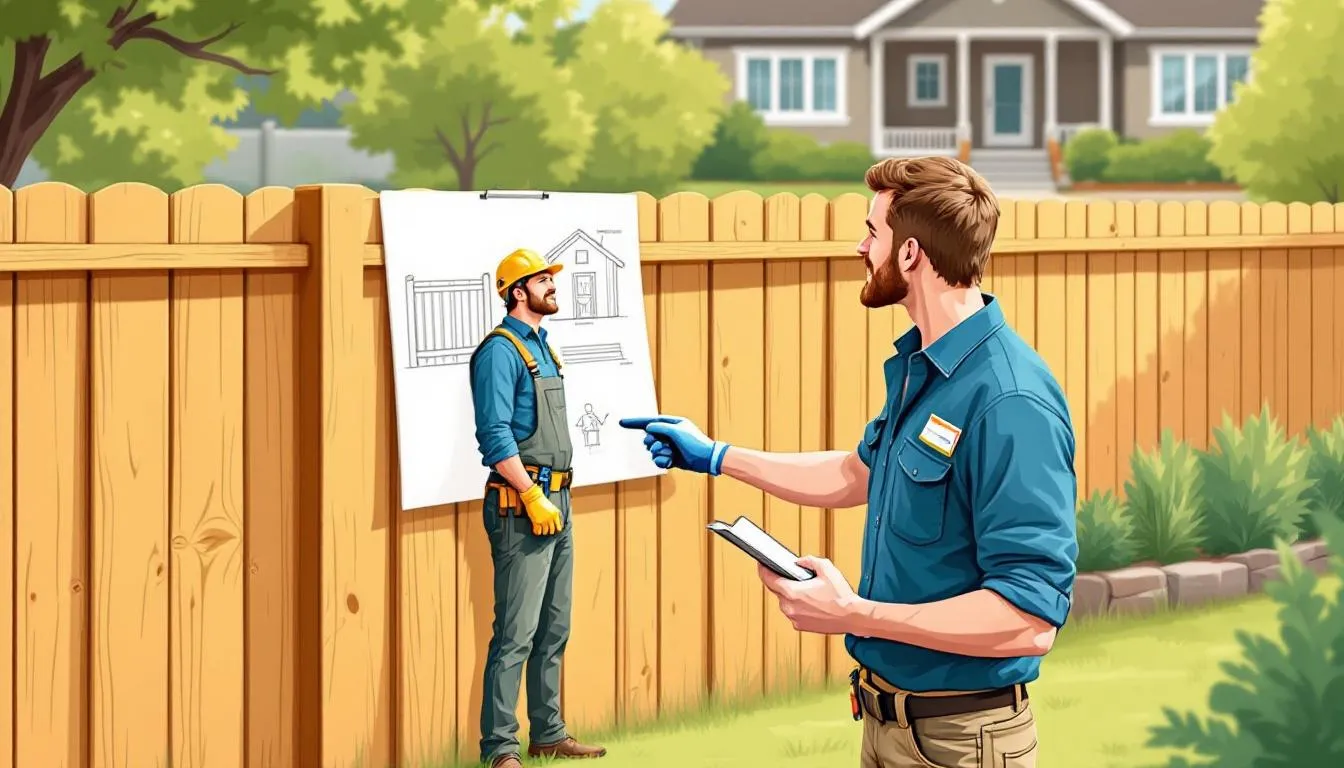
Hiring a professional fence contractor can ensure a hassle-free fence installation process. A reputable contractor provides expertise, quality workmanship, and warranties, making the investment worthwhile.
Evaluating Contractors
When evaluating contractors, consider the following:
-
Verify their reviews and references from previous clients to gauge their reliability.
-
Use experienced crews to enhance the installation process, yielding better quality and faster completion.
-
Ensure the contractor provides a warranty for their work, indicating a commitment to quality.
The contractor’s crew should follow a final checklist to ensure all agreed standards are met before complete the job.
Getting Quotes and Comparing Prices
Obtaining multiple quotes from various contractors is essential to ensure competitive pricing and options. Factors that impact the overall fence installation costs include:
-
Different materials, which significantly affect the cost
-
Labor costs, depending on complexity and local labor rates
-
Additional features, such as gates and decorative elements, which can also affect the total installation price
When evaluating contractors, consider their experience, reputation, and feedback from previous clients to make an informed decision.
Ensuring Quality Workmanship
A reputable contractor should provide a clear warranty, ensuring peace of mind for the homeowner regarding their workmanship in construction. Choosing a contractor with insurance protects you from liability for accidents on your property.
Communicate with the installers if you have any questions during the installation. The last payment should be made on the day of completion, allowing you to review the fence and ensure quality.
DIY Fence Installation Tips
DIY fence installation can be a rewarding project for those who prefer a hands-on approach. Proper planning and preparation ensure a successful outcome.
Gathering the Right Tools and Materials
Essential materials for DIY fence building include fence panels, posts, rails, concrete mix, and necessary hardware. Tools needed typically involve a measuring tape, posthole digger, level, saw, hammer, and safety gear.
Having all the necessary materials and tools on hand before installing can make the installation process smoother and more efficient.
Step-by-Step Installation Guide
Start by gathering all your tools, materials, and safety gear. Quality materials, proper bracing, and correct end and corner post assemblies are critical for ensuring the stability of a built fence.
Follow a step-by-step guide to ensure each part of the installation is done correctly. If end and corner assemblies are constructed incorrectly, it may require rebuilding the entire fence.
Common DIY Mistakes to Avoid
Inaccurate measurements when marking post locations can result in a crooked fence, leading to structural issues. To save time and avoid costly mistakes, take expert advice seriously and measure twice before digging.
Enhancing Curb Appeal with Your New Fence

A well-designed brand new fence can significantly enhance your property’s visual appeal, making it stand out in the neighborhood.
Let’s explore how to choose the right style, add curb appeal, and landscape around your fence to maximize curb appeal.
Choosing the Right Style
Consider the following factors when selecting a fence style:
-
Overall aesthetic
-
Personal preferences
-
Cost
-
Benefits such as privacy, security, and curb appeal
Choosing a style that aligns with your home’s architectural design enhances the overall aesthetic and adds value.
Wrought iron fences, for example, offer a high level of security and aesthetic appeal. Incorporating the right fence style can elevate your property’s value and appeal.
Adding Decorative Elements
Incorporating decorative elements like post caps and paint can add personal flair to your fence while improving its attractiveness. Features like planters and decorative panels can transform a functional fence into a stylish focal point in your yard.
Adding decorative features like post caps and arbors can enhance the overall appearance of your fence.
Landscaping Around Your Fence
Placing plants and flowers strategically around your fence can improve its appearance and create a cohesive outdoor space. Proper landscaping around a fence can soften its appearance and create a more inviting outdoor space.
Strategic planting of flowers and bushes near your garden fence can enhance its visual appeal and create a cohesive outdoor design.
Summary
Installing a fence involves careful planning and consideration of various factors, from choosing the right materials to understanding costs and complying with local regulations. Proper preparation of your yard and effective communication with neighbors can ensure a smooth installation process.
Whether you hire a professional contractor or opt for a DIY approach, understanding the steps involved and avoiding common mistakes will help you achieve a successful outcome. Enhancing curb appeal with the right fence style, decorative elements, and landscaping can significantly uplift the visual appeal of your property.
By following these tips and guidelines, you’ll be well-equipped to embark on your fence installation journey with confidence, creating a beautiful and functional addition to your home.
Frequently Asked Questions
What factors should I consider when choosing a fence material?
When choosing a fence material, think about your budget, what look you want, and what function you need it to serve. Each option, like wood, vinyl, and metal, has its own perks and downsides to weigh.
How can I reduce fence installation costs?
You can lower your fence installation costs by shopping around for the best prices, negotiating with suppliers, and looking for seasonal discounts. Plus, if you’re up for it, digging the post holes yourself can save you even more money!
Do I need to clear my yard before fence installation?
Absolutely! Clearing your yard of any overgrowth and obstacles is crucial for a smooth fence installation. It makes the process easier and ensures the fence is set up properly.
What should I do if my neighbor objects to my fence plans?
If your neighbor objects to your fence plans, it’s best to address their concerns promptly to keep things amicable. Have an open discussion about any potential issues and consider drafting a written agreement on responsibilities.
What are the benefits of hiring a professional fence contractor?
Hiring a professional fence contractor means you’ll benefit from their expertise and quality workmanship, ensuring a hassle-free installation and addressing any issues that come up. It’s a smart choice for peace of mind and a durable fence.
